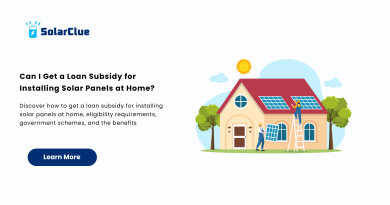Best Solar Panel for Partial Shade Conditions: A Guide
In recent years, solar energy has gained immense popularity as a sustainable and eco-friendly solution to meet our energy needs. Solar panels, which harness the power of the sun to generate electricity, are becoming increasingly common on residential and commercial rooftops. However, one challenge that solar panel installations face is partial shade conditions. In this blog, we will discuss the best solar panels to use in such conditions, ensuring optimal energy generation even in the presence of shade.
Table of Contents
The Impact of Shade on Solar Panels
Shade falling on solar panels can significantly reduce their power output. Even a small amount of shading on a single panel can have a cascading effect on the entire array. Shadowing can cause voltage drops, hotspots, and even reduce the overall lifespan of the panels. Therefore, it is crucial to choose solar panels that are specifically designed to tackle partial shade challenges.
Monocrystalline Solar Panels
One type of solar panel well-suited for partial shade conditions is the monocrystalline panel. These panels utilize cells made from a single crystal structure, usually silicon. Monocrystalline panels have excellent efficiency, which means they can generate more electricity from a smaller surface area. Additionally, they perform better under low-light conditions and exhibit reduced sensitivity to shade. Therefore, if there are shading concerns in your installation area, monocrystalline panels should be considered.
Thin-Film Solar Panels
Thin-film solar panels are another alternative for partial shade conditions. Unlike monocrystalline panels, thin-film panels are made by depositing layers of semiconductor material onto a substrate, such as glass or metal. The advantage of thin-film panels lies in their flexibility, making them suitable for unconventional installations or areas with irregular shapes. These panels also handle shading more effectively than traditional crystalline panels. While thin-film panels may have lower conversion efficiency compared to monocrystalline panels, they shine in low-light conditions, ensuring consistent energy generation even in partially shaded areas.
Micro Inverters and Power Optimizers
In addition to selecting the right type of solar panel, using micro inverters or power optimizers can maximize energy generation in partial shade conditions. A traditional solar system uses a single inverter, which converts the direct current (DC) generated by the panels into alternating current (AC) for household use. However, when a shadow falls on even a single panel, the performance of the entire system is compromised.
Micro inverters or power optimizers are devices that can be attached to individual solar panels, optimizing their performance independently. By doing so, the effects of shading are isolated, mitigating the impact on the overall system output. This technology allows each panel to perform to its maximum potential, resulting in improved energy generation in partially shaded areas.
Conclusion
Illuminate shaded spaces with SolarClue® as we guide you through selecting the best solar panels for partial shade conditions. Panels with advanced features like bypass diodes and half-cut cells from brands like LG Solar, SunPower, and Panasonic are designed to excel in partially shaded environments. SolarClue® offers expert consultations to tailor solutions to your specific needs, ensuring consistent power generation despite shading. Consider factors like efficiency, warranty, and system design for optimal performance. Our platform also helps you explore government incentives, maximizing the financial benefits of investing in solar panels tailored for partial shade. Illuminate every corner with SolarClue®—contact us for personalized solar solutions.
Frequently Asked Questions
Certain panels incorporate advanced technologies like bypass diodes and half-cut cells to mitigate the impact of shading, ensuring better performance in partially shaded environments.
Bypass diodes enable the unaffected solar cells to continue generating power when others are shaded, minimizing the overall impact of shading on the panel’s performance.
Half-cut cells reduce energy loss due to shading by isolating sections of the panel. This enhances efficiency and power generation even when parts of the panel are shaded.
Absolutely, solar panels optimized for partial shade conditions are ideal for homeowners with partially shaded rooftops, as they ensure consistent power generation despite shading.
Manufacturers like LG Solar, SunPower, and Panasonic are recognized for producing solar panels with advanced features, making them well-suited for partial shade conditions.
SolarClue® provides expert consultations, guiding homeowners to choose the most suitable panels with advanced shading mitigation features based on their specific needs and shading conditions.
In addition to shading mitigation features, homeowners should consider factors like efficiency, warranty, and overall system design to optimize performance in partially shaded conditions.
Yes, these panels are designed for versatility, performing well in both shaded and sunlit conditions, making them a practical choice for various environments.
Ongoing technological advancements focus on enhancing the efficiency and performance of solar panels under varying shading conditions, providing homeowners with increasingly reliable options.
SolarClue® assists homeowners in exploring available government incentives, rebates, and tax credits, maximizing the financial benefits of investing in solar panels tailored for partial shade conditions.



